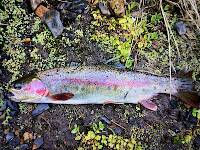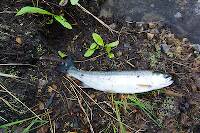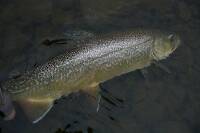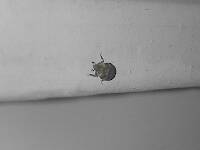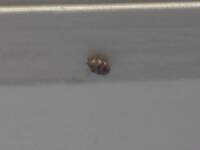
Blue-winged Olives
Baetis
Tiny Baetis mayflies are perhaps the most commonly encountered and imitated by anglers on all American trout streams due to their great abundance, widespread distribution, and trout-friendly emergence habits.
Featured on the forum

This is an interesting one. Following the keys in Merritt R.W., Cummins, K.W., and Berg, M.B. (2019) and Jacobus et al. (2014), it keys clearly to Ephemerella. Jacobus et al provide a key to species, but some of the characteristics are tricky to interpret without illustrations. If I didn't make any mistakes, this one keys to Ephemerella mucronata, which has not previously been reported any closer to here than Montana and Alberta. The main character seems to fit well: "Abdominal terga with prominent, paired, subparallel, spiculate ridges." Several illustrations or descriptions of this holarctic species from the US and Europe seem to match, including the body length, tarsal claws and denticles, labial palp, and gill shapes. These sources include including Richard Allen's original description of this species in North America under the now-defunct name E. moffatae in Allen RK (1977) and the figures in this description of the species in Italy.

Troutnut is a project started in 2003 by salmonid ecologist Jason "Troutnut" Neuswanger to help anglers and
fly tyers unabashedly embrace the entomological side of the sport. Learn more about Troutnut or
support the project for an enhanced experience here.
Martinlf on Jul 29, 2012July 29th, 2012, 6:19 am EDT
I fished the West Branch of the Delaware this weekend, and found a pod of fish midging up in Deposit. Finding myself without my midge box, I used a parachute Trico and started hooking a number of small fish. Then I found a larger one showing some fin, targeted it and hooked and landed it. It was a brown, but it had markings much like a tiger trout, with brook trout vermiculations on the back, and some wavy markings on the sides, but the wavy markings were not as pronounced or detailed as in other tigers I've caught. They were not parr marks, but broken wavy bands of darker coloration along the sides of the fish. The fish had the red spots of Vohn Behr browns as well--just as some tigers do. I was tickled, as it seemed to be the first wild tiger I'd landed, but finding some other larger fish (relatively speaking--none of these fish were over 12") and targeting them, I managed to land about 4 more that looked much like the first. By that time I was doubting they were tigers, but they also did not look like the other fish I caught there, which were clearly browns with no vermiculations on the top or sides. Finding this many fish that had some markings I associate with tiger trout, I began to speculate that perhaps someone had stocked the fish, if they were tigers. I know there is a small population of brook trout in the West Branch, but it seems impossible to find this many tigers in one spot. The fish were perfect, no fins abraded or droop, and their coloration was bright, just like the other small browns I caught there. Does anyone (Jason??) have any ideas about this variation in coloration for small brown trout? I've never seen anything like it.
"He spread them a yard and a half. 'And every one that got away is this big.'"
--Fred Chappell
--Fred Chappell
PaulRoberts on Jul 29, 2012July 29th, 2012, 7:49 am EDT
Neat. I've caught brookies in the WB.
Your guess that your possible tigers might have been stocked/escaped seems logical. If stocked as fingerlings, or raised in small numbers (uncrowded), trout won't have warped fins. At the Hudson Highlands forest I've been doing work at, the forest manager raises brook trout with perfect fins. In a natural stream, they look as though they could be streambred.
Your guess that your possible tigers might have been stocked/escaped seems logical. If stocked as fingerlings, or raised in small numbers (uncrowded), trout won't have warped fins. At the Hudson Highlands forest I've been doing work at, the forest manager raises brook trout with perfect fins. In a natural stream, they look as though they could be streambred.
Martinlf on Jan 17, 2017January 17th, 2017, 8:13 am EST
Matt, it was 2012. Here's the situation I mentioned to you.
"He spread them a yard and a half. 'And every one that got away is this big.'"
--Fred Chappell
--Fred Chappell
Quick Reply
Related Discussions
Topic
Replies
Last Reply
7
Jun 25, 2019
by Wbranch
by Wbranch
4
Nov 1, 2012
by Entoman
by Entoman




